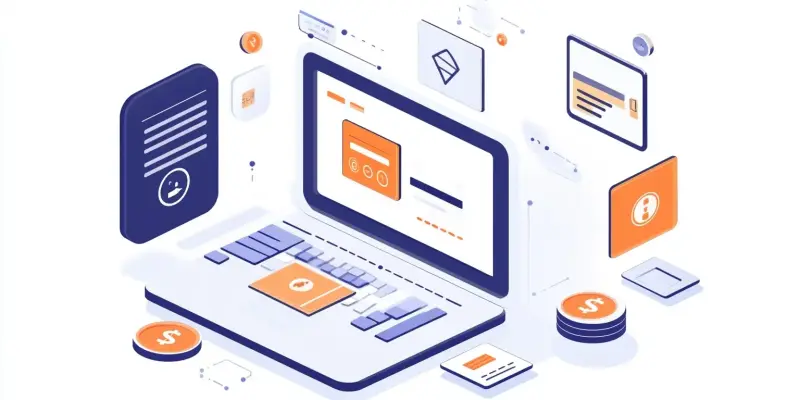The European payment industry is undergoing a substantial transformation driven by the Single Euro Payments Area (SEPA) initiative, which aims to create a unified market for euro payments. SEPA encompasses 38 European countries, including those outside the eurozone and the European Union, allowing customers to conduct euro transactions using a single bank account and standardized payment instruments. The European Central Bank has emphasized the tremendous potential of SEPA in simplifying payment processes, reducing cross-border transaction complexity, and facilitating trade and economic activities. Such standardization represents a significant leap forward in making payments more accessible and efficient across Europe, an effort that has been long awaited by both consumers and businesses.
The introduction of instant payment processing, mandated by SEPA, represents a major shift from traditional payment systems that often required extended periods for fund transfers. Under the SEPA framework, near-instantaneous fund transfers will become the norm, contrasting with systems like the Clearing House Automated Payment System (CHAPS), which handles high-value transactions on a same-day basis but imposes higher fees. Faster payment systems not only cater to smaller transactions with lower costs but can also complete transactions within seconds or minutes. Compliance with stringent new regulations demanding 10-second payment processing poses significant challenges for financial institutions, particularly in terms of real-time screening without causing delays.
The Regulatory Push for Instant Payments
The new regulations introduced under SEPA’s framework have set four critical implementation deadlines that promise to revolutionize the payment processing landscape in Europe. By January 2025, all payment service providers (PSPs) within the EU must possess the capabilities to receive and process instant payments 24/7 within 10 seconds, ensuring compliance with anti-money laundering (AML) regulations through daily sanctions screening of customer accounts. This marks the beginning of a new era where transactions occur at lightning speed, necessitating PSPs to invest in and upgrade their current infrastructure to keep pace with regulatory requirements.
By October 2025, EU-based PSPs are required to send instant euro payments seamlessly across borders while adhering to Verification of Payee (VoP) protocols that mandate the verification of payee details before processing transactions. Such measures ensure the accuracy and security of international transactions, providing an added layer of trust and integrity to the financial system. The ability to send instant payments across Europe will foster greater financial integration, thereby contributing to the broader objective of European economic cohesion and dynamism.
Infrastructure Upgrades and Fraud Prevention
The implementation of SEPA’s new requirements is expected to demand substantial infrastructure enhancements for financial institutions. Balancing the rapid processing of transactions with effective fraud prevention measures is critical in this new landscape. Financial organizations must integrate advanced financial crime controls, including continuous Know Your Customer (KYC) processes and sanctions screening leveraging name-matching technology. To this end, institutions are investing heavily in technology solutions capable of enabling instant payment processing while concurrently conducting real-time anti-financial crime measures to maintain system integrity.
Artificial intelligence (AI) and machine learning (ML) are becoming increasingly pivotal in supporting the digital transformation of risk and compliance processes within financial institutions. These advanced technologies facilitate perpetual screening across extensive customer bases, ensuring that all transactions adhere to regulatory standards without sacrificing speed or efficiency. Despite the operational challenges that accompany these regulatory updates, they also present opportunities for PSPs to enhance their service offerings by capitalizing on improved transaction processing efficiency and reliability.
Opportunities Amid Challenges
As financial institutions navigate the SEPA-induced changes, they face both hurdles and opportunities. The necessity for significant infrastructure upgrades and the integration of sophisticated real-time fraud detection measures pose considerable challenges. However, these same demands also compel institutions to innovate and adopt advanced technologies, thus opening avenues for improved services and enhanced customer experiences. The competition among PSPs to offer the fastest and most reliable services will likely drive technological advancements across the sector, benefiting consumers and businesses alike.
Furthermore, the potential for more streamlined and efficient payment processes across Europe cannot be understated. By aligning fee structures and ensuring accurate name matching for transactions, SEPA aims to create a more transparent and equitable financial ecosystem. As financial organizations adapt to the new regulatory landscape, they are likely to develop more robust systems and practices that not only meet compliance requirements but also offer innovative solutions that transform the user experience. The ripple effects of these changes are poised to create a more interconnected and dynamic European payment environment, fostering both economic growth and technological progress.
The Future of European Payments
The European payment industry is experiencing a major transformation due to the Single Euro Payments Area (SEPA) initiative, aimed at creating a unified market for euro payments. SEPA covers 38 European countries, including non-eurozone and non-EU nations, allowing customers to make euro transactions using a single bank account and standardized payment tools. The European Central Bank highlights SEPA’s immense potential to simplify payment processes, cut down cross-border transaction complexities, and boost trade and economic activities. This standardization is a significant leap forward, making payments more accessible and efficient across Europe, a long-awaited effort by consumers and businesses alike.
The shift to instant payment processing mandated by SEPA marks a significant change from traditional systems that required longer transfer times. Under SEPA, near-instantaneous fund transfers become the norm, unlike systems like the Clearing House Automated Payment System (CHAPS) that handle high-value transactions on the same day at higher costs. Faster payment systems handle smaller transactions at lower costs, completing them in seconds or minutes. This regulatory demand for 10-second payment processing poses challenges for financial institutions in screening transactions in real-time without delays.

